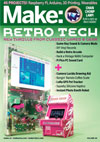We all have piles of old T-shirts lying around, the ones we just can’t seem to part with. But don’t call Goodwill just yet. We’ll show you how to turn those dust collectors into something useful; an everyday purse or carrying bag.
We got the idea for this bag while we were working on our own reusable grocery bag pattern, the Charlie bag. Our intern Katie Leaver took the reins and came up with this jewel.


















